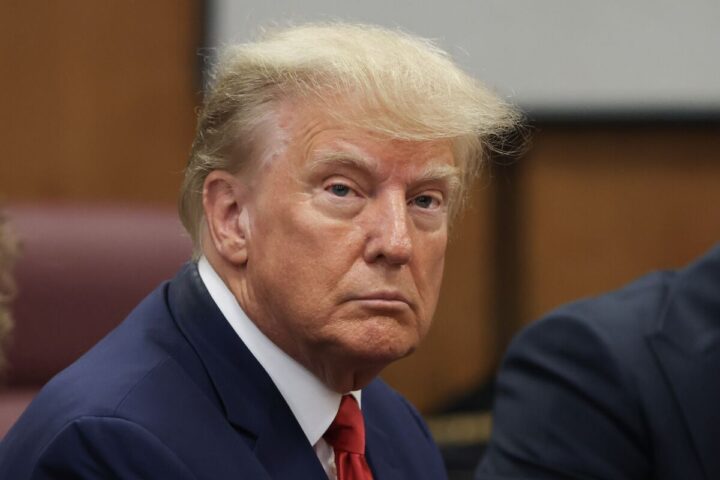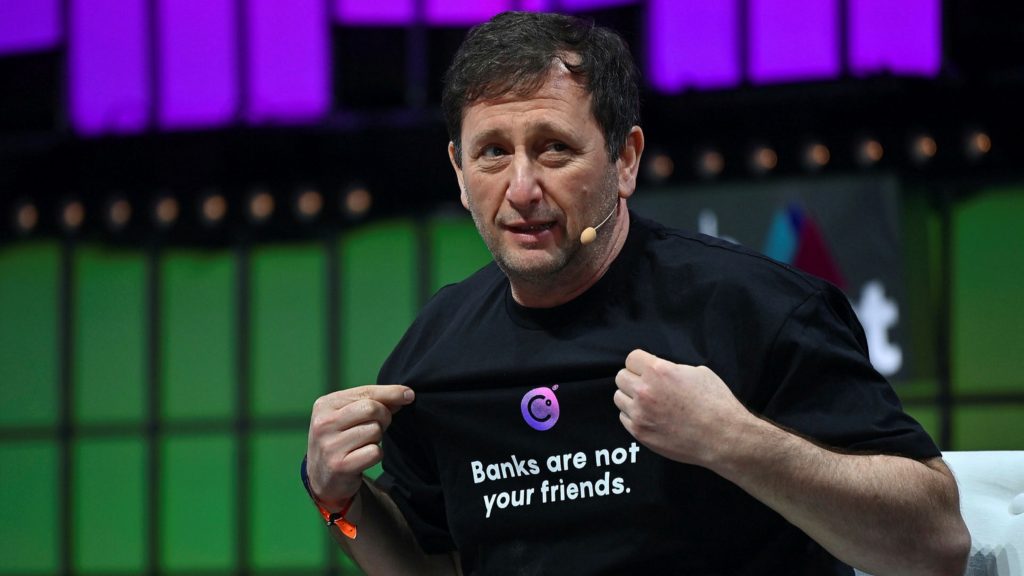FMFW.io (“Free the Money, Free the World”) Exchange is thrilled to announce its third-anniversary celebration with an official NEARStarter partnership announcement and series of campaigns that will positively impact and expand the Near and FMFW.io ecosystems.
In April, the FMFW.io team announced the development of a tokenized incubator and a launchpad on the Near blockchain — NEARStarter. NEARStarter is a launchpad component of FMFW.io’s incubation, acceleration and funding system for projects deploying on the Near Protocol. The launchpad will provide its community access to the latest and greatest projects launched on Near and Aurora.
NEARStarter’s journey was ignited by a $50,000 grant offered by the Near Foundation Grant Program. Ever since, NEARStarter has gained more than 10,000 members, welcomed 10 international Near guilds, and entered into strategic partnerships with companies, such as Atocha Protocol, Near Tinker Union, Tonic DEX, Few and Far, Tracer and others.
FMFW.io celebrates its third anniversary joined by a select group of notable partners including Bantu Blockchain Foundation, FILMCOIN, Wallex, Tune.FM and Trade The Chain, so watch out for their upcoming AMAs, podcasts, giveaways, and competitions in the coming weeks across all FMFW.io channels.
The FMFW.io community is 1.2 million members and counting worldwide. The exchange offers 500+ spot trading pairs across five base currencies, as well as a wide variety of markets and instruments to fulfill the needs of every trader. With its high liquidity, FMFW.io offers up to 12x leverage for margin trading and up to 100x for futures trading. Currently, the exchange offers over 90 margin pairs and 20 perpetual futures contracts.
“I’m thrilled and proud of what our entire FMFW.io team has been able to accomplish in these past three years, which have been interesting, to say the least. I’d like to thank our partners, the community, and everyone who continues to support and work with us. We are super excited, and there’s lots more to come, so watch this space.” – Danish Chaudhry, CEO of FMFW.io
Enter the epic NEARStarter contest!
NEARStarter will kick off FMFW.io’s birthday celebrations in a big way: a contest where community members can win exclusive and limited-edition NEARStarter x FMFW.io merchandise and non-fungible tokens (NFTs), trading discounts, tier access, VIP perks and more! You can learn more about the NEARStarter x FMFW.io contest here.
NFT Vicious Fishes Collection
Vicious Fishes is NEARStarter’s exclusive NFT collection. Each of the initially released NFT beasts will grant its holder an allocation of NEARStarter native token NSTART equal to the listing price of each NFT.
For more information on the Vicious Fishes Collection, please check further details here.
FMFW.io Anniversary competitions
FMFW.io thanks its loyal partners for coming together and taking part in the anniversary activities, including the launch of brand new features, trading competitions, NFT and merchandise giveaways and AMAs across twitter, telegram and discord.
Traders and crypto enthusiasts will be able to compete for prizes up to $100,000 equivalent in tokens. To make it all sweeter, FMFW.io offers new traders a whopping 70% discount on trading fees.
Join FMFW.io now and trade with 70% OFF on trading fees.
Take a closer look at all the action that will happen during FMFW.io’s three-year anniversary, including some incredible prizes to be won: click here.
Referral Program
Traders and crypto enthusiasts can take advantage of the anniversary activities by inviting their friends to join FMFW.io Exchange and earn together. Learn more about how you and your friends can make the most out of the FMFW.io three-year anniversary here.
About FMFW.io
The mission of FMFW.io is to empower people worldwide to trade cryptocurrencies with ease and confidence, from first-time traders to advanced trading professionals. With high liquidity, 24/7 multilingual support and dozens of trading pairs complemented with a high level of security, it offers an easy to use and robust platform for trading cryptocurrency.
Telegram | Twitter | Blog | Website
About NEARStarter
NEARStarter is a next-generation launchpad and tokenized incubator with full capabilities and resources to support the world’s best decentralized finance and Web3 entrepreneurs to hyper-scale and launch their projects on the Near blockchain.
Telegram | Discord | Twitter | Blog | Website
The women behind Web3 Summit announced today that Wendy O, who runs The O Show on YouTube and Yu-Kai Chou, author of Octalysis and founder of MetaBlox, will be the keynote speakers at the first Web3 community event to headline Art Basel in Miami from Nov. 30 to Dec. 1, 2022.
Among the 5,000 attendees, journalists and influencers from Cointelegraph, Entrepreneur, and Crypto Slate will be in attendance. A press room will also be available for speakers and exhibitors to make announcements and take interviews. This is one of the largest community events to headline Art Basel, with JChains as MC. Doors open at 9:30 am on Nov. 30 and close at 5:30 pm on Dec. 1, 2022.
Web3 Summit founder Kimberli Bruce said “Our goal is to promote and support women in Web3, and by doing so, we hope to bring more balance between women and men, not just in Web3 but as a whole. Our planet is off balance, but equilibrium begins with us, then everything else around us comes together.
In addition, women really need to be recognized for the difference they make and everything they inadvertently bring to the table. To quote Josh Stern, ‘behind every successful man is a woman.’”
About Web3 Summit
The Web3 Summit aspires to spread the power of optimism. We strive to ensure everyone who attends our event walks away feeling they have become a part of a great community, having gained knowledge to grow as better people, in business and in our personal lives. We value and honor each and every individual’s contribution and support to making this event become a reality.
District of Columbia Attorney General Karl Racine accused MicroStrategy co-founder and Executive Chairman Michael Saylor of evading $25 million in district taxes in a lawsuit filed Wednesday.
The lawsuit also names MicroStrategy as a defendant. Racine alleges the company conspired to help Saylor evade the taxes. The AG’s office said it’s seeking to recover a total sum of over $100 million in unpaid taxes and penalties.
Shares of MicroStrategy were down more than 6% Wednesday afternoon on the news. Saylor, who oversaw the company’s push into bitcoin, stepped down as CEO earlier this month. Under his leadership, MicroStrategy spent close to $4 billion acquiring bitcoin at an average price of $30,700, and he has said he considers the company’s stock a sort of bitcoin ETF.
Saylor allegedly claimed to reside in Virginia or Florida, which have lower or no personal income tax rates, while actually living in several different homes around D.C., including a penthouse apartment in the Georgetown neighborhood or on his yacht on the Georgetown waterfront or Potomac River when the apartment was undergoing renovations, according to the lawsuit. The suit includes several screenshots of posts that appear to be from Saylor’s Facebook page dating back several years and referencing the view from his “Georgetown balcony” and discussing his “home” while tagging Washington, D.C.
MicroStrategy allegedly “had detailed information confirming that Saylor was in fact a DC resident,” according to a press release, but it chose to withhold that information.
In a statement, MicroStrategy said, “The case is a personal tax matter involving Mr. Saylor. The Company was not responsible for his day-to-day affairs and did not oversee his individual tax responsibilities. Nor did the Company conspire with Mr. Saylor in the discharge of his personal tax responsibilities. The District of Columbia’s claims against the Company are false and we will defend aggressively against this overreach.”
Around 2014, the AG’s office claims in the lawsuit, MicroStrategy’s then-chief financial officer confronted Saylor about his alleged tax evasion being a potential liability for the company. Saylor and MicroStrategy ended up reaching an agreement where Saylor’s salary would be reduced to a nominal $1, the lawsuit claims, in order to reduce the risk authorities would discover the alleged scheme. Still, the AG alleges, Saylor continued to benefit from “fringe benefits” with a “high cash value,” such as use of the company plane.
“A decade ago, I bought an historic house in Miami Beach and moved my home there from Virginia,” Saylor said in a statement. “Although MicroStrategy is based in Virginia, Florida is where I live, vote, and have reported for jury duty, and it is at the center of my personal and family life. I respectfully disagree with the position of the District of Columbia, and look forward to a fair resolution in the courts.”
The suit is the first to be brought under a recently passed law called the False Claims Act, according to Racine’s office. The district law incentivizes whistleblowers to report tax fraud and allows the court to impose penalties up to three times the amount of the evaded taxes, according to the AG’s office.
The district suit follows a separate complaint filed by whistleblowers against Saylor in April 2021, accusing him of failing to pay income taxes from 2014 through 2020. The complaint was filed under seal but made public on Wednesday.
The AG’s office said it independently investigated the whistleblower case and found MicroStrategy had filed inaccurate W-2s with his Florida-based address and had failed to withhold taxes allegedly owed to the district. The new lawsuit alleges Saylor failed to pay income tax he owed to the district starting in 2005.
Follow Crypto Intelligence on Google News to never miss a story
Although the value of bitcoin has fallen by over 60% from its record highs as of August 2022, this “crypto winter” isn’t reducing interest in purchasing digital currency.
About 56% of consumers say they’re at least somewhat interested in buying cryptocurrency within the next year, according to PYMNTS and BitPay’s August “Paying with Cryptocurrency” survey.
Nearly 42% of millennials say they are either very or extremely likely to buy crypto in the next year. For Gen Z, that number drops to about 26%.
What’s behind the continued fascination with crypto? While nearly 50% of respondents are motivated by the possibility of making money from their crypto investments, about 15% of respondents say the “fear of missing out” is driving their decision.
“History has shown us that the market has defied all odds even during downward periods, so investors remain positive about the ability of bitcoin and cryptocurrencies to remain resilient,” says Iyandra Smith-Bryan, chief operating officer of Quantfury, a global broker-dealer that provides exchange spot prices on global and crypto exchanges.
Additionally, belief in the underlying blockchain technology continues to fuel investors’ optimism about the adoption of cryptocurrency in the future, Smith-Bryan says.
Investors also tend to see the silver lining to crypto winters. “It eliminates the weaker players, leaving the best players on the field; giving those best players an opportunity to concentrate on advancements in technology, product development, and heightening support and service,” Smith-Bryan adds.
While plenty of people hope to earn a profit from their crypto holdings, many want to be able to use it to make purchases too.
Around 40% of 18 to 35-year-olds plan to use crypto to pay for goods and services this year, according to Checkout.com’s “Demystifying Crypto” report.
As the process of using crypto to make purchases becomes more seamless, “we will see hockey stick-like growth — much like the speed of growth of the internet,” says Max Rothman, head of crypto and digital assets at Checkout.com.
Currently, the fluctuations in the value of many forms of cryptocurrency, such as bitcoin and ether, make it challenging to use as a payment method.
However, stablecoins, which is cryptocurrency that’s value is pegged to the price of another asset such as gold, can present both consumers and retailers with the price stability they’re seeking, Rothman says.
Stablecoins “offer all the benefits of a digital asset — transparency, decentralized data and immediate availability of funds — but are better able to withstand the volatility of markets,” Rothman says.
Although interest in crypto remains high, there are real risks that should be taken into account.
Cryptocurrency is a highly volatile digital asset that is subject to erratic fluctuations in value. There are no guarantees of earning a profit, which is why experts recommend only investing as much money as you’re willing to potentially lose.
Additionally, cyber thieves can sometimes hack the virtual wallets that store your crypto and steal your funds, so it’s important to be extra diligent about security.
Follow Crypto Intelligence on Google News to never miss a story
The premier crypto event World Blockchain Expo announced Dubai as its next destination, with the event to be held on Oct. 15, 2022. History is repeating itself again, but this iteration of the event will be in Dubai.
The World Blockchain Expo will bring an opportunity for blockchain business owners, startups and individuals who are thinking about moving their businesses forward onto the blockchain by means of funding opportunities and expert guidance.
The World Blockchain Expo Dubai 2022 (WBE) will feature technology leaders and concept advocates within the blockchain industry. The event’s organizers recently announced over-subscription in terms of sponsors and investors, which has exceeded expectations. The event now anticipates attracting over 30 sponsors.
In addition to sponsor and investor interest, WBE has managed to attract some industry heavyweights in terms of speakers like Metaverse speaker and NFT tech founder Mario Nawfal, Huobi Global business development manager Michela Silvestri, Luna PR founder and CEO Nikita Sachdev and Yard Hub CEO Yaroslav Shakula.
The list continues to grow in every sense, as the organizers have indicated that they are in talks with many more speakers. With all these ingredients in place, World Blockchain Expo should be on the to-do list of every fintech professional or those looking to start their Web3 path.
“It is imperative for all blockchain and technology enthusiasts to have platforms for knowledge-sharing and discussion of adoption strategies, and The World Blockchain Expo Dubai 2022 is an event that offers just that. I am delighted to be a part of an event that promises to be a conduit in the development of this global tech phenomenon,” said the operational manager of World Blockchain Expo.
“Events of this nature are of critical importance in exploring the widespread utility of blockchain, and I stress that all like-minded individuals put it on their To-Do list,” he added.
Innovators from this emerging tech environment will be traveling from countries worldwide including the United States, United Kingdom, Switzerland, Russia, Malaysia and India.
Attendees can expect an exciting program and insights from visionary speakers working with blockchain, participation in roundtable discussions and networking sessions to connect with key industry leaders and investors, and facilitated business meetings.
The event is open for registration, with early bird tickets available until Oct. 13.
The leading digital asset and cryptocurrency trading platform MEXC firstly is introducing a 0 maker fee rate offering for all spot traders from August 31. The 0 maker fee policy applies to all spot trading pairs on MEXC. This marks a ground-breaking level of user experience that has been brought to the crypto space for all traders.
For now, reports show that MEXC reaches a spot daily trading volume of $1.6 billion, and more than 1,500 trading pairs are listed on MEXC, according to CoinMarketCap. While the 0 maker fee policy is introduced, more than 7 million users worldwide will benefit from the promotion in every single spot trading activity.
With the value of “users first, service foremost,” MEXC keeps making efforts and remains competitive regarding the user experience in the ever-changing cryptocurrency market since being founded in 2018. Especially over the past months, the MEXC team has successfully pushed the boundaries. In April, MEXC firstly introduced its NFT Index product to help people around the world take part in nonfungible tokens (NFTs) more affordably. In August, MEXC introduced MX/USDT perpetual trading and then launched a trade mining feature on the platform, with more still to come.
MEXC Global vice president Andrew Weiner commented, “As the first exchange in the industry to announce zero maker fees for all spot trading pairs, MEXC continues to win support and trust from our user community every time the market changes. We are dedicated to making the user experience more effortless and seamless.”
The promotion opens on Aug. 31 at 15:00 (UTC) until further notice. For more details, please stay tuned to the MEXC website for official announcements.
About MEXC
MEXC is the world’s leading cryptocurrency trading platform, providing one-stop cryptocurrency trading services for spot, exchange-traded funds, futures, staking, NFT Index, etc., and serving more than 7 million users worldwide.
The core team has a solid background in traditional finance and has professional financial product logic and technical security guarantees in terms of cryptocurrency products and services. In October 2021, MEXC Global won the title of “Best Cryptocurrency Exchange in Asia.”
Currently, it supports the trading of more than 1,500 cryptocurrencies and is the trading platform with the fastest launch speed for new projects and the most tradable categories. Visit the website and blog for more information and follow MEXC Global and MEXC Research.
Crypto lender Celsius Network will allow withdrawals from some of its customers, potentially returning $210 million to users who were locked out of their accounts this summer.
Celsius paused customer withdrawals in June, claiming it had been slammed by the massive crypto sell-off. It later attempted to resume withdrawals by raising money through a high-yield token, but eventually filed for bankruptcy in July.
But a new court filing said the lender will reopen withdrawals for customers who have custodial and withhold accounts, CoinDesk reported, noting about 58,300 users deposited over $210 million in those accounts.
That came a day after 64 custodial customers filed a petition against the crypto lender demanding their funds be returned to them, adding that Celsius had the ability to do so, but have avoided that for months.
“The Debtors’ continued refusal to honor withdrawals of all Custody Assets has created tremendous hardship on their users as set forth in hundreds of letters filed on the docket and at hearings,” the petition said, referring to letters sent to the Southern District of New York from Celsius customers. Many of them have expressed anger at being locked out of their accounts, and have pleaded to get their deposits back.
Celsius owed $4.7 billion when it filed for bankruptcy. According to court filings, Celsius said the total value of its assets were only worth around $4.3 billion at the time it declared bankruptcy, around $17 billion less than what it reported in March of this year.
Follow Crypto Intelligence on Google News to never miss a story
A cryptocurrency-exchange company accidentally transferred almost $10.5 million to an Australian woman but failed to notice the error for seven months, according to a legal document.
Crypto.com made the mistaken payment in May 2021 when it was supposed to pay Thevamanogari Manivel $100 but instead entered the wrong account number into the payment-amount field, according to a default judgment released on Friday in the Supreme Court of Victoria.
Manivel therefore received $10,474,143 from Crypto.com by mistake.
The cryptocurrency firm failed to spot the erroneous payment until a company audit was carried out in late December — seven months later, according to the judgment.
Crypto.com then launched legal action against Manivel and her sister Thilagavathy Gangadory, who received some of the $10.5 million payment, the judgment said.
The company was granted freezing orders in February against Manivel’s bank account but discovered that she had sent most of the money to other accounts, the judgment said.
In late January, Manivel sent $430,000 to her daughter, the judgment said. A month later, Manivel purchased a $1.35 million house in Craigieburn, a suburb of Melbourne, with the money that was mistakenly sent to her, the company added in the judgment.
Manivel then transferred the ownership of the house to Gangadory, who lives in Malaysia, the judgment said.
Crypto.com tried to freeze Gangadory’s bank accounts in March, but it proved unsuccessful, the judgment said.
Gangadory didn’t respond to correspondence from Crypto.com’s solicitors but did reply to one email from Manivel’s lawyers, saying “received, thank you,” according to the judgment.
Manivel’s solicitors told Crypto.com that Gangadory was seeking legal advice, the judgment said.
The default judgment ordered Gangadory to pay Crypto.com $1.35 million, sell the property, and pay interest of $27,369.64 and costs.
Crypto.com didn’t immediately respond to Insider’s request for comment. The company declined to comment to The Guardian and Daily Mail Australia while the case was before the courts.
Follow Crypto Intelligence on Google News to never miss a story
After tremendous success with its prominent presence at last year’s Gitex Dubai, crypto incubator and advisor TDeFi is returning to the Middle East’s premier technology gathering, which promises to be even bigger and better than last year.
Gitex Global (Gulf Information Technology Exhibition) is one of the world’s most influential gatherings in the tech industry. Attended by more than 250,000 people from over 140 countries, the event brings together many of the sector’s brightest minds and greatest innovators to discuss the state of the space, showcase new products and identify emerging opportunities.
More than 4,000 exhibitors will be taking part in Gitex Dubai 2022, including hundreds of the most active VCs from over 30 countries. More than 1,000 prominent speakers will deliver over 280 hours of exclusive content live on stage from the Dubai World Trade Center between Oct. 10 and 14, 2022. The packed Gitex agenda will span every corner of the industry, from cybersecurity, energy and education to healthcare, Web3 and digital cities. It’s the ultimate technology networking event, attended by some of the sector’s most revered luminaries.
Leaders from more than 1,200 private companies, government entities and startups — including many of the tech industry’s most successful organizations — descend on Dubai each year for the Gitex conference, representing more than 170 countries. GITEX dates back to 1981 and has since grown into one of the industry’s must-attend events, where exhibitors and presenters from all corners of the globe come together to share knowledge and show off their latest innovations.
This year, TDeFi will again participate at Gitex with an exhibition of its portfolio showcasing its latest projects. TDeFi is an incubator and advisory firm for blockchain startups, affording them seamless access to many resources, such as high-quality mentorship, financial support, marketing, community building, exchange listings, liquidity provisioning and growth hacking partnerships.
One of the most memorable events from last year’s Gitex was BizThon 1.0, a unique blockchain hackathon where over 10,000 participants put their collective brainpower together to turn their blockchain-based business ideas to life with the help of TDeFi and its partners. After months of offline developing, 25 finalists were selected to pitch their ideas live on stage in front of an esteemed panel of judges. This year, TDeFi will host BizThon 2.0 with the help of partners including MythX, Metamazonia, Faith Tribe, Edverse, Vulcan Forged, Sinverse, Bridge Network, EQ8 and more than 30 of its portfolio companies.
TDeFi is excited to once again be taking part in one of the region’s and planet’s most important gatherings of the technology industry.
About Gitex Dubai
Gitex Dubai is one of the world’s biggest and most influential technology conferences, attended by over 250,000 participants representing more than 140 countries. This year’s event will have more than 4,000 exhibitors, 800 startups and over 1,000 speakers, with the roster including some of the space’s most prominent names. It will be held in Dubai, UAE from Oct. 10 to 14, 2022.
About TDeFi
TDeFi incubation provides access to world-class mentors, industry connections, transactional token economics, network of experts in technology, marketing and community, exchanges, liquidity and growth hacking partnerships. It seeks projects not just looking to survive, but those looking to thrive for years to come and disrupt the status quo in their respective fields.
London, the United Kingdom, Sept. 2 — Reef, a layer-1 Substrate-based blockchain for decentralized finance (DeFi), nonfungible tokens (NFTs) and gaming, announced today its highly anticipated Reef Card is now available for people in the United Kingdom and Europe.
Reef has been working with Baanx, an experienced partner for revolutionary Web3 financial solutions, to create and produce Reef Card. Reef Card, powered by Baanx, is part of the Mastercard crypto debit line. Due to COVID-19 and material production delays, the card was put on hold until this year. Now it’s officially available to everyone in the U.K. and European Economic Area.
Denko Mancheski, CEO of Reef said, “We feel good about the future of Reef, and over the past year, we’ve been working hard with Baanx to get Reef Card out. We’re excited to have it available now and allow hodlers the opportunity to spend their cryptocurrencies in the physical world.”
Crypto debit cards have become a hot ticket in the physical world as they add another layer of utility to tokens and the cryptocurrency landscape. Reef Card owners will be able to spend their crypto and have their card convert it to fiat only at the time of purchase, and they will be able to use their card at over 90 million merchants worldwide and even withdraw fiat at certain ATMs. To start, Reef Card will be available as a physical card and Google Play right away. Apple Pay will come next.
Garth Howat, CEO of Baanx said, “It’s very exciting to see that more companies and communities are adopting our solutions to bridge the gap between DeFi and traditional finance. We’ve been working hard with the Reef team on this project, allowing the community to enjoy Reef’s ecosystem to the fullest.”
Reef continues to evolve and expand its blockchain, quickly gaining momentum on the lead to becoming one of the top five Web3 blockchains. Recently, Reef launched an NFT division, attended Binance Blockchain Week in Dubai, launched ReefScan V2, and a new REEF Community Staking Bond. Reef Card is another innovative addition to the rise of the chain and its native token, REEF.
About Reef
Reef’s Substrate-based layer-1 blockchain with smart contract functionality offers an intuitive user experience, high scalability and low fees, helping the ecosystem to be a go-to platform for NFT projects. Reef is the most advanced Ethereum Virtual Machine-compatible blockchain with smart contract functionality. Based on a nominated proof-of-stake consensus mechanism, the network offers low fees and scalability, as well as myriad features, including native token bridges, on-chain governance, recurring payments and much more. Eventually, the platform will also support an additional virtual machine that will allow developers to write code in several different programming languages.
About Baanx
Baanx offers fintech services to the digital asset sector, including Cryptodraft and payment authorization integration into Visa, Mastercard and other transaction payment systems. Baanx headquarters are in London, U.K. with subsidiaries in Delaware, United States, Portugal and Lithuania. Baanx manages digital assets with maximum privacy and security. The company is launching services for more than 25 top-tier clients, including Ledger and Reef. Baanx is managed by a seasoned team with over a hundred years of combined experience in banking, financial technology, cryptography, finance and digital marketing.













